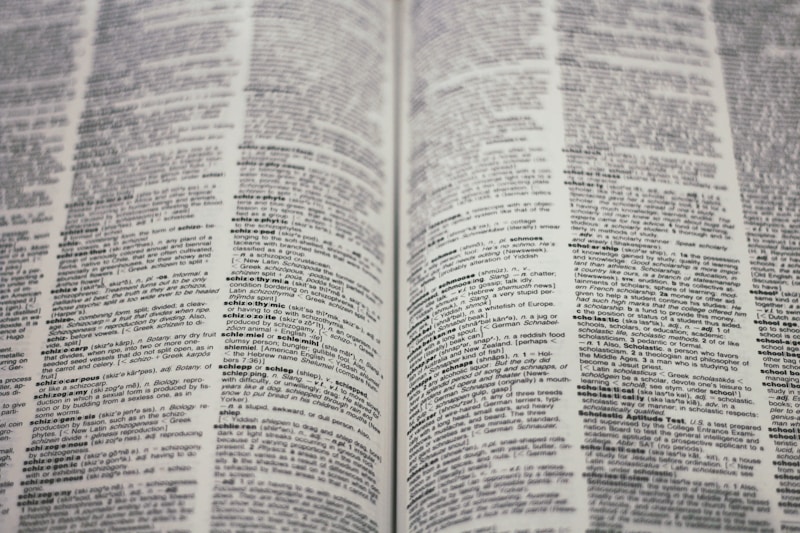Questions and Answers
What is the function of adjectives in a sentence?
Describing or modifying nouns, pronouns, or other adjectives
Which part of speech represents people, places, things, or ideas?
Nouns
What do verbs express in a sentence?
Action performed by the subject of a sentence
What is the role of adverbs in a sentence?
Signup and view all the answers
Which part of speech are action words?
Signup and view all the answers
What are the different types of words that perform specific functions in a sentence known as?
Signup and view all the answers
What is the main function of prepositions?
Signup and view all the answers
What is the defining characteristic of a simple sentence?
Signup and view all the answers
What is the purpose of using a semicolon in a sentence?
Signup and view all the answers
Which punctuation mark is used to show doubt or uncertainty?
Signup and view all the answers
What is the role of conjunctions in a sentence?
Signup and view all the answers
What is the function of parentheses in a sentence?
Signup and view all the answers
Which type of word can be personal, possessive, reflexive, or demonstrative?
Signup and view all the answers
What is the primary role of an exclamation point in punctuation?
Signup and view all the answers
What is the main purpose of using an apostrophe in English?
Signup and view all the answers
What is the primary function of dashes in punctuation?
Signup and view all the answers
Study Notes
Grammar: The Building Blocks of Effective Communication
Grammar is a crucial aspect of effective communication, as it helps us convey our ideas and messages clearly and accurately. It is the set of rules that governs the construction of sentences in a specific language, and it encompasses various elements, including parts of speech, sentence structure, and punctuation. In this article, we will explore these subtopics and how they contribute to the overall structure of a piece of writing.
Parts of Speech: The Essential Building Blocks
Parts of speech are the different types of words that perform specific functions in a sentence. They include:
-
Nouns: Nouns are words that represent people, places, things, or ideas. They can be common or proper, and they can function as the subject or object of a sentence.
-
Verbs: Verbs are action words that express what the subject of a sentence is doing or has done. They can be in various tenses and forms, such as transitive or intransitive.
-
Adjectives: Adjectives are words that modify or describe nouns, pronouns, or other adjectives. They can provide additional information about the noun's appearance, color, size, quantity, number, or other attributes.
-
Adverbs: Adverbs are words that modify or describe verbs, adjectives, other adverbs, or even whole sentences. They can provide additional information about the verb's action, timing, place, manner, purpose, or degree.
-
Pronouns: Pronouns are words that take the place of a noun, pronoun, or noun phrase. They can be personal, possessive, reflexive, or demonstrative.
-
Prepositions: Prepositions are words that show the relationship between a noun or pronoun and other parts of the sentence, such as location, time, manner, or direction.
-
Conjunctions: Conjunctions are words that connect words, phrases, or clauses in a sentence. They can combine ideas, show cause and effect, or indicate time or sequence.
-
Interjections: Interjections are words or phrases that express strong emotions, such as surprise, excitement, or disbelief.
Sentence Structure: Arranging Words for Maximum Impact
Sentence structure refers to the arrangement of words in a sentence to convey a message effectively. There are two main types of sentence structures: simple and compound.
-
Simple Sentence: A simple sentence consists of one independent clause, which contains a subject and a verb. It expresses a complete thought and can stand alone.
-
Compound Sentence: A compound sentence consists of two or more independent clauses, which are combined using coordinating conjunctions. This structure allows for the expression of multiple ideas in a single sentence.
Punctuation: The Final Touches
Punctuation is the use of marks and symbols to indicate pauses, breaks, and relationships between the various parts of a sentence. Some common punctuation marks include:
-
Period (.): Used to indicate the end of a sentence or the end of a complete thought.
-
Comma (,): Used to separate items in a list, indicate a pause in a sentence, or separate independent clauses in a compound sentence.
-
Question Mark (?): Used to indicate a direct question or to show doubt or uncertainty.
-
Exclamation Point (!): Used to express excitement, surprise, or emphasis.
-
Colon (:): Used to introduce a list, a quote, or a statement that follows a sentence.
-
Semicolon (;): Used to separate two independent clauses that are closely related or to combine two related sentences.
-
Parentheses (): Used to set off additional information or explanations within a sentence.
-
Dash (—): Used to indicate a break in thought or to set off important information within a sentence.
-
Apostrophe ('): Used to indicate possession, contraction, or to show omission of letters or numbers.
Conclusion
Grammar is the foundation of effective communication, and understanding its components, such as parts of speech, sentence structure, and punctuation, is essential for crafting clear, concise, and impactful messages. By mastering these elements, you can enhance your writing skills and communicate your ideas more efficiently.
Studying That Suits You
Use AI to generate personalized quizzes and flashcards to suit your learning preferences.
Description
Explore the fundamental elements of grammar, including parts of speech, sentence structure, and punctuation, and how they contribute to effective communication. Learn about nouns, verbs, adjectives, adverbs, pronouns, prepositions, conjunctions, interjections, simple and compound sentence structures, as well as common punctuation marks. Enhance your writing skills by mastering these essential building blocks of language structure.




